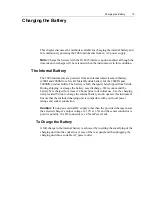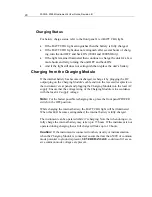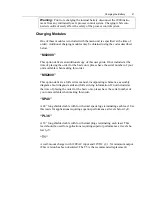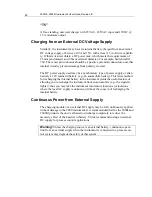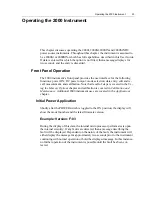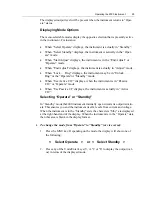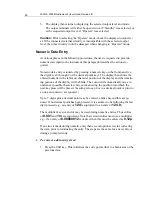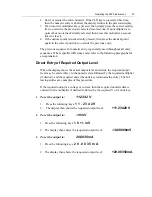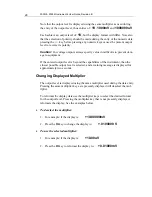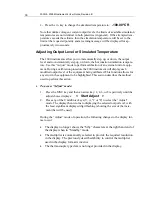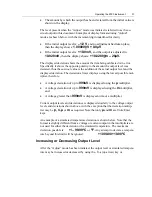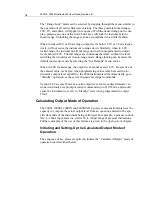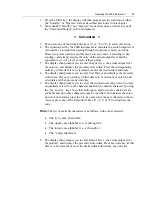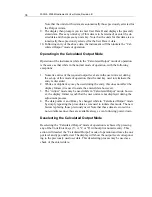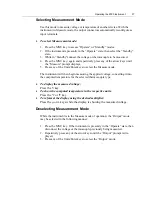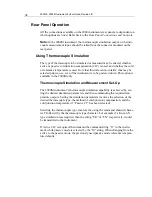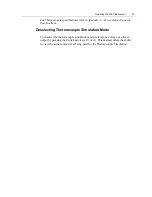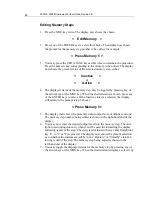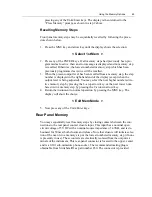
Operating the 2000 Instrument
33
If neither “Standby” or “Operate”
are the desired action at this point, con-
tinue to press any of the arrow
keys, or the MNU key until the “Set De-
faults”
action is displayed:
< Set Defaults >
Press any of the Units/Enter keys (V, A, ºC or ºF
)
to select this action. The
display then prompts to select whether the instrument is to assume the
“Operate” or “Standby”
state, following power on, the display
shows:
< Select Standby >
If the “Operate”
mode is required, then press any of the arrow keys to se-
lect the alternate action:
< Select Operate >
When the desired action displays, press any of the Units/Enter keys (V, A,
ºC or ºF
)
to select the action required. The display then shows the present
default output level, similar to that shown in the example:
+1.000000 V
This shows that the output level following power on will be:
+1.0 V
Now enter the desired initial output level, terminating the entry by press-
ing the Units/Enter keys: V or A, as required.
The instrument returns to normal Operation, displaying the present output level
and status. The default values set during this procedure are used when the instru-
ment is next powered ON.
Performing Internal and External Calibrations
Calibration is initiated via the MNU key. Refer to the
Maintenance and Calibra-
tion
chapter.
Range Locking
The F.02 or later firmware versions provide “Range Lock” mode for the 20VDC
and 2VDC, as well as for the 20mA DC current range. These range locking fea-
tures provide more functionality for calibration and testing of diverse circuits
such as control loops and A/D converters. In locked range mode, the accura-
cy/offset/resolution specifications for the selected range apply for all entered out-
put levels, including those which would normally invoke a lower range. For
precise testing with extremely small output levels, it is recommended to unlock
the instrument to allow operation in Auto-Range mode.
Summary of Contents for Xitron 2000 Series
Page 1: ...USER GUIDE 2000 Family DC Temperature Source Instruments...
Page 2: ......
Page 18: ...2000I 2000M Instrument s User Guide Revision B 18...
Page 42: ...2000I 2000M Instrument s User Guide Revision B 42...
Page 47: ...Using the Memory Options 47...
Page 60: ...2000I 2000M Instrument s User Guide Revision B 60...
Page 91: ......
Page 92: ...2000I 2000M Instrument s User Guide Revision B 92...
Page 95: ...Appendix B General Specifications 95...
Page 97: ...Password Page 97...

